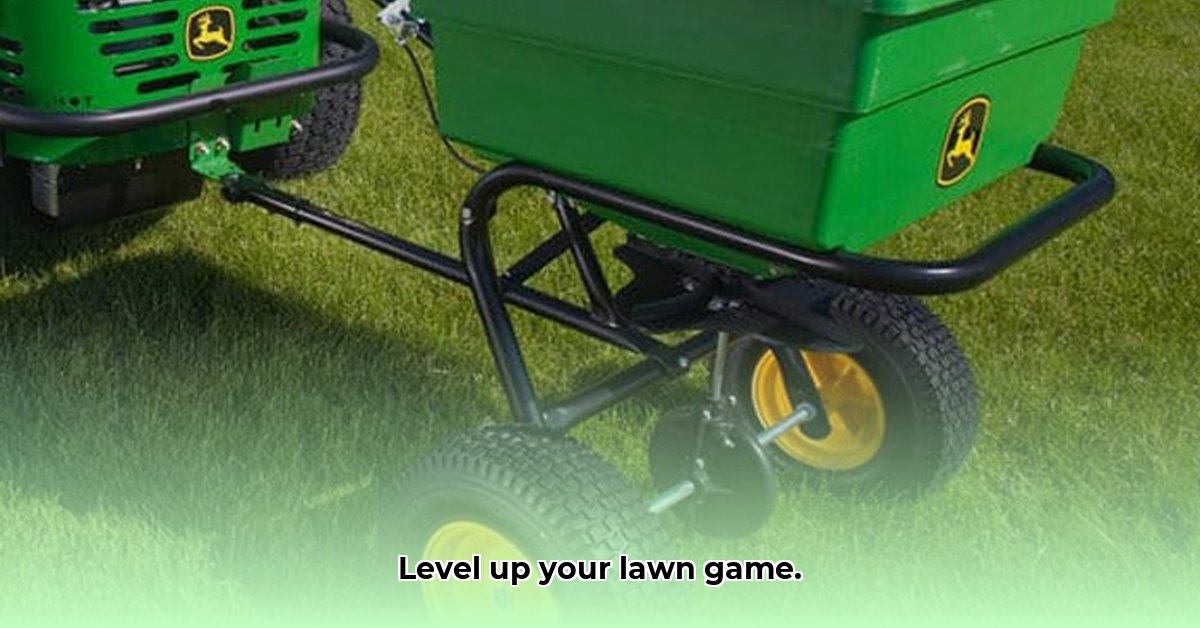
Pull Behind Spreader for Lawn Tractor: A Comprehensive Guide
Thinking about upgrading your lawn care routine? A pull-behind spreader for your lawn tractor can significantly improve efficiency and ensure even fertilizer and seed distribution. This guide delves into choosing the right spreader, using it effectively, and troubleshooting common issues. Let's get started on achieving that perfect lawn! For more information on lawn tractors, check out this helpful resource: Lawn Tractor Info.
Choosing the Right Spreader: Key Considerations for Your Lawn
Selecting the optimal pull-behind spreader involves carefully considering several key factors. Your lawn's size, fertilization frequency, and budget will all significantly influence your choice. Let's break down the essentials:
Hopper Capacity: A larger hopper (the container holding the fertilizer or seed) reduces the number of refills needed, saving time and effort. However, a smaller hopper might be easier to manage for smaller lawns. Consider the balance between convenience and the frequency of refills.
Spread Width: Wider spread widths expedite lawn coverage. But for smaller or intricately shaped lawns, a narrower spread might be more maneuverable, preventing overlaps and wasted material.
Calibration: Accurate calibration is paramount for uniform distribution. Look for spreaders with user-friendly calibration mechanisms to ensure consistent application across your lawn. Inconsistent application can lead to uneven growth and wasted resources.
Material Compatibility: Verify spreader compatibility with the materials you intend to use (fertilizer, seed, etc.). Some spreaders are designed for specific materials.
Here's a comparison chart to aid your decision, factoring in lawn size and budget:
| Feature | Small Lawn (<1/2 acre) | Medium Lawn (1/2 - 1 acre) | Large Lawn (>1 acre) | Notes |
|---|---|---|---|---|
| Hopper Capacity (lbs) | 50-75 | 75-100 | 100+ | Bigger is better for less refilling |
| Spread Width (feet) | 4-6 | 6-8 | 8-12 | Consider your yard's shape and obstacles |
| Approximate Price Range ($) | $100-300 | $300-500 | $500+ | Prices vary greatly depending on features |
Setting Up and Using Your Pull-Behind Spreader: A Step-by-Step Guide
Proper setup is crucial for optimal performance. Follow these steps carefully for successful fertilizer or seed application:
Secure Attachment: Carefully connect the spreader to your lawn tractor's hitch, following the instructions in both your tractor and spreader manuals. Ensure a secure connection for safety.
Calibration: Calibrate your spreader precisely. Your spreader’s manual provides detailed instructions on this critical step. It involves adjusting settings to achieve a consistent, even spreading pattern. Testing it in a small area will help fine-tune the settings.
Filling the Hopper: Fill the hopper gently, avoiding overfilling to prevent spills and uneven application.
Test Run: Before tackling the entire lawn, conduct a test run on a small, inconspicuous patch. This allows for adjustments and ensures perfect results before covering the entire area.
Maintenance and Troubleshooting: Keeping Your Spreader in Top Shape
Regular maintenance extends the lifespan of your spreader. After each use, thoroughly clean it, removing any residue. This prevents clogging and ensures accurate spreading in subsequent applications.
Addressing common issues is straightforward:
- Clogs: Check for obstructions and clear them promptly.
- Uneven Spreading: Recalibrate the spreader and check for any mechanical issues.
- Difficulties Attaching: Ensure proper alignment and secure connections.
Consult your spreader's manual for detailed troubleshooting guidance.
Is a Pull-Behind Spreader Right for You? Weighing the Pros and Cons
Advantages:
- Increased Efficiency: Significantly speeds up lawn care, especially for large areas.
- Consistent Application: Provides more even fertilizer/seed coverage than manual spreaders.
- Versatility: Many can handle fertilizers, seeds, and other lawn care products.
- Ease of Use: Attaches easily to most lawn tractors for user-friendly operation.
Disadvantages:
- Higher Initial Cost: More expensive than handheld spreaders.
- Storage Requirements: Larger size necessitates more storage space.
- Maintenance: Requires periodic cleaning and maintenance.
- Maneuverability: May not be suitable for extremely small or irregularly shaped yards.
For larger lawns, the efficiency and even distribution a pull-behind spreader offers often outweigh the initial investment and storage considerations. By following the advice in this guide, you'll enjoy a healthy, vibrant lawn for years to come.